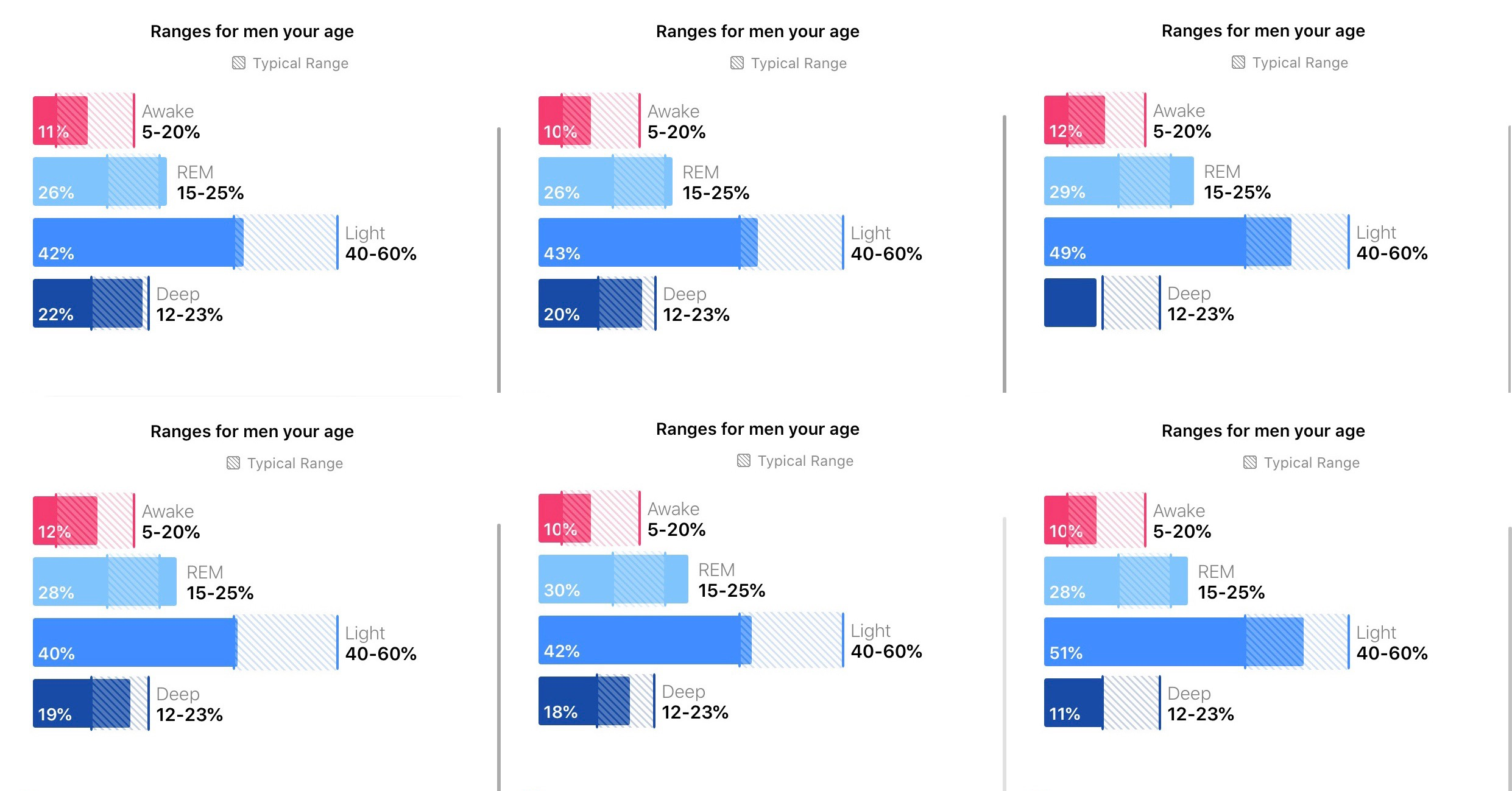I am not yet a fan of wearables. I’m excited about their ability to provide granular feedback about or health but I remain skpetical about how the manufacturers of consumer wearables will treat data. Data custody is one of the themes we have explored regularly on this site. However, I have been wearing my Fitbit wristband for the last few weeks for help in establishing a minimal level of movement during the day, especially as outdoor movement has been minimal.
The sleep stats are particularly interesting to me. I noticed a couple of weeks ago that my REM sleep had been typically more than even the higher end of what Fitbit considers a normal range for men of my age.
Sometimes that extra REM sleep comes at the cost of light sleep, which from what I understand is not that much of an issue, but sometimes at the cost of deep sleep. This could be a problem.
Now the exact role played by each sleep phase is not yet well understood as of this writing. Most experiments involve depriving humans or other animals of particular kinds of sleep and then observing the impact on particular kinds of cognitive tasks. Regardless, this is what some sources state about the role of REM sleep:
Naiman describes the brain during REM sleep as a sort of “second gut” that digests all of the information gathered that day. “Everything we see, every conversation we have, is chewed on and swallowed and filtered through while we dream, and either excreted or assimilated,” he says.
Several studies in recent years have suggested thatREM sleep can affect how accurately people can read emotions and process external stimuli. Walker’s research, for example, has demonstrated that people who achieved REM sleep during a nap were better able to judge facial expressions afterward than those who’d napped without reaching REM. (source)
Francis Crick (of DNA fame) and Grahame Mitchison suggested that dreams act as an “unlearning” mechanism, whereby certain modes of neural activity are erased by random activation of cortical connections… Michel Jouvet proposed that dreaming reinforces behaviors not commonly encountered during the awake state (aggression, fearful situations) by rehearsing them while dreaming. Yet another hypothesis is that REM sleep and dreams are involved in the transfer of memories between the hippocampus and neocortex. (source)
In plain terms it appears to be about processing information gathered during the day – although perhaps this will be proven incorrectly later. This is not surprising given that the day job is information-heavy, that I read constantly about the topics that make it to this site, and a book or two a month.
For the last few days, after noticing the pattern and having done this reading-up, I’ve become even more conscious about limiting information exposure.

